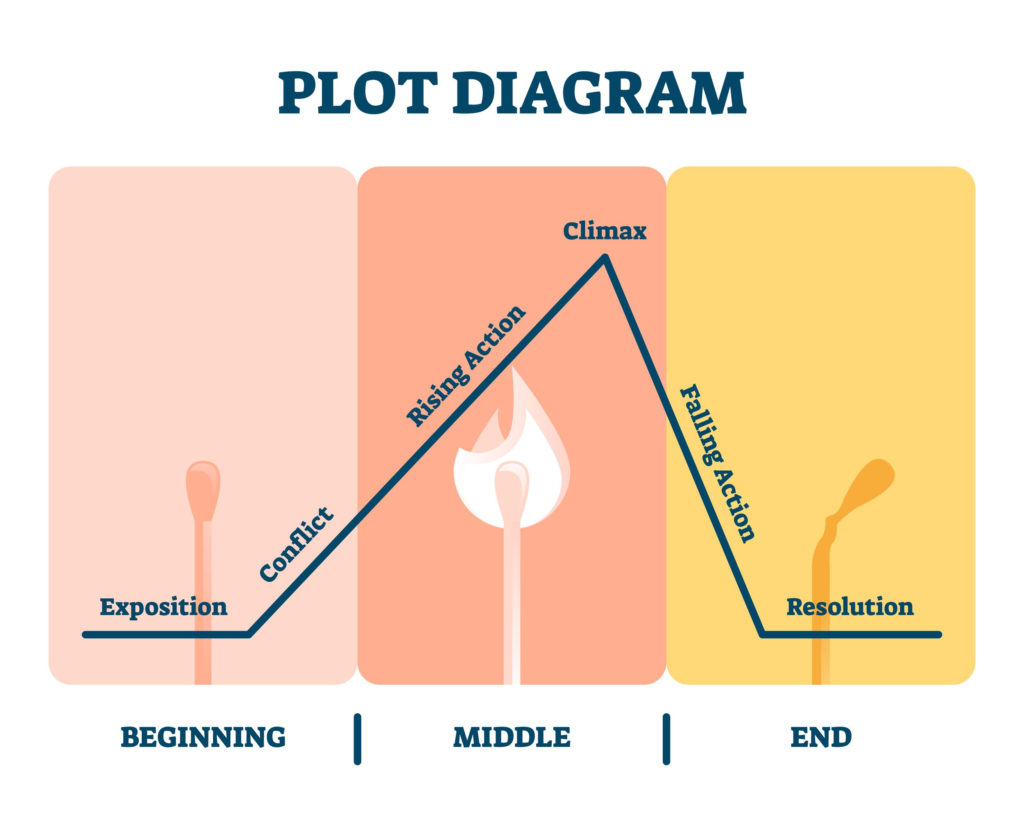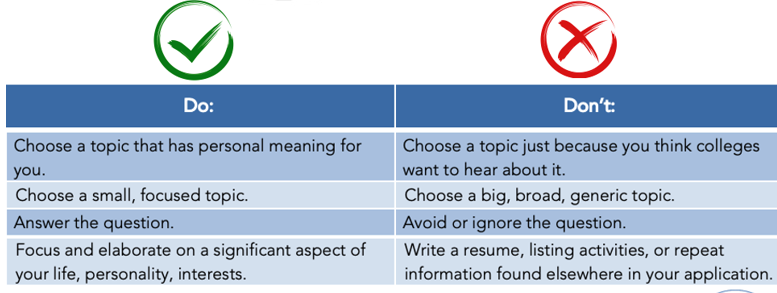 As you prepare your college applications, the most important and likely the most difficult component you confront will be the personal essay. Required on the Common Application, the personal essay asks you to answer the question: WHO ARE YOU?
As you prepare your college applications, the most important and likely the most difficult component you confront will be the personal essay. Required on the Common Application, the personal essay asks you to answer the question: WHO ARE YOU?
Beyond the existential challenge of identifying your essence, there is the technical challenge of conveying said essence via a compelling narrative and at a maximum length of 650 words. If this sends your head spinning, do not fear: below, we walk you through some tried-and-true tips for crafting a tight, captivating personal essay that will wow admissions officers.
How to Get Started
The first step to writing an impressive personal essay is brainstorming. As we like to say at Collegiate Gateway: great writing starts with great thinking! An effective personal essay is the product of many hours of self-reflection; it takes time and patience to find creative and meaningful themes before you even craft your first sentence.
The goal in brainstorming is to review your experiences, motivations and personal qualities. Try various techniques to unearth this information: journal; meditate; talk to a friend; go on a walk and record a voice message into your phone. You won’t end up including all of your life experiences—far from it, as doing so would result in a scattered personal essay—but excavating and then organizing your thoughts will give you a better picture of your potential essay topics.
You might also free-write or bullet-point in response to the following prompts (from the Common Application; note that there is also the option to write about a topic of your choice):
- Do you have a background, identity, interest, or talent that is so meaningful you believe your application would be incomplete without it? (Think creatively here: you might discuss the intersection of two different passions in your life.)
- Recount a time when you faced a challenge, setback, or failure. How did it affect you, and what did you learn from the experience? (Here, you might write about overcoming a fear or an illness.)
- Reflect on a time when you questioned or challenged a belief or idea. What prompted your thinking? What was the outcome?
- Reflect on something that someone has done for you that has made you happy or thankful in a surprising way. How has this gratitude affected or motivated you?
- Discuss an accomplishment, event, or realization that sparked a period of personal growth and a new understanding of yourself or others.
- Describe a topic, idea, or concept you find so engaging that it makes you lose all track of time. Why does it captivate you? What or who do you turn to when you want to learn more?
Your eventual goal is to zero in on a small topic. Though it might sound paradoxical, it’s true: the specific is the gateway to the universal. So the narrower in scope your essay is, and the more depth (as opposed to breadth) it has, the more likely it will be to hook admissions officers.
What to Avoid
Now that you’ve brainstormed, you’re ready to get started on a draft! But before you dive in, make sure the topic you’ve chosen isn’t inappropriately personal, offensive, or too opinionated. Also avoid summarizing the information already covered in other parts of your application; arrogance or grandiosity; and cliché. Some topics that are not definite no-nos, but may prove extra challenging because they’re very common, include:
- A natural disaster (like COVID, Katrina, or Sandy) and how it impacted you
- A sports fiasco or triumph (such as your winning touchdown)
- An essay about someone else (like your influential grandmother)
- The service trip that changed your life (especially if it took place in Costa Rica)
Only pursue one of the above topics if it’s a unique situation or has had an extremely unusual impact on you such that you can address it in a personal and distinctive way.
Get Drafting!
When writing, your main goals are to:
- Hook the reader
- Be counter-intuitive
- Be specific
- Show, don’t tell
- Use your own voice
If accomplishing all of this within a single essay sounds tough, keep in mind that there is no need to reinvent the wheel with your essay structure! There are some tried-and-true models we share with our students to help them build a compelling essay.
Narrative arc. This is perhaps the most common and effective essay structure. The concept may already be familiar to you from English class if you’ve ever discussed the Hero’s Journey. In essay-writing, the elements are the same, though the content will of course differ (since this will be a short work of personal nonfiction, not a novel). Here they are:
- Exposition: Intro to the story, like the opening scene of a story, book, movie. Set up the characters, setting, mood, time.
- Conflict: The primary issue/problem/challenge/obstacle that drives the plot of the story.
- Rising action: The events that lead to the climax, including character development.
- Climax: The turning point for the main character, where the situation/problem is at its most extreme. The most exciting point of the story.
- Falling action: The result of the climax, including character development, growth, realizations, questions answered, wrapping-up of plot.
- Resolution: Completion of the story. Tie up loose ends, discuss how the situation has changed. End up at a different point than where you started.
An example of such an essay would begin with a conversation with a fellow creative writer friend about starting a literary journal at your high school. The conflict: you don’t have the funding. The rising action: a massive fundraising effort involving various unexpected setbacks. The climax: you’ve finally amassed significant funds for your journal and can now begin the equally arduous task of putting it together. The falling action: putting together the first issue of your literary journal. The resolution: the journal has come out in print, and you’re holding it in your hands for the first time.
Your essay, however, may not be about a single, defining story, in which case it may be better suited by one of the two organizing frameworks below.
Three-legged stool. This essay structure involves a main idea and several supporting details. Your main idea, metaphor, or theme is the seat, and it’s best supported when at least three anecdotes or examples support it. An example of such an essay might focus on a theme of seeing the world in gray (nuances) rather than in black-and-white (extremes), supported with examples of realizations in math class, Mathletes, and, finally, your self-taught computer programming initiative that there are many ways to solve a problem.
Snowball. This essay formula chronicles the development of an interest or engagement with an activity. It’s built in chronological order and culminates in self-actualization. An example of such an essay would begin with a fear of swimming, followed by a decision to overcome the fear by learning to swim; the learning process; becoming a lifeguard; and, finally, teaching others how to swim.
For a summary of a few salient personal essay dos and don’ts, see the following chart:
Here at Collegiate Gateway, we are always happy to answer your questions about all aspects of the college admissions process, including the Common App, resumes, recommendations, interviews, video submissions, and more. Visit our website to set up a complimentary consultation to learn about our services.




